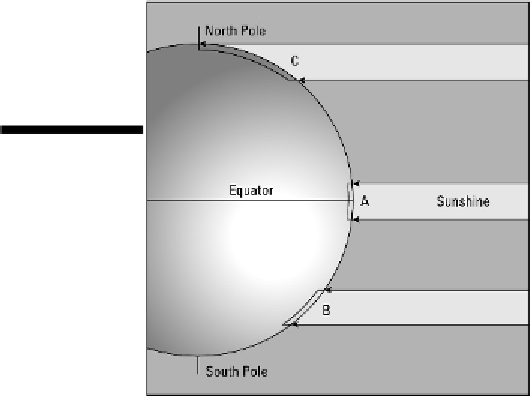Geography Reference
In-Depth Information
The following sections show how each bullet point creates climate.
Playing the Angles
Parts of Earth receive different amounts of
solar energy
— heat from the sun. The dosages are
greatest in the equatorial realms and progressively diminish as one approaches the Poles. For
this reason, rather warm climates generally dominate the low latitudes and give way to cooler
and cooler climates in the mid-latitudes and polar regions.
These differences are due to the angles at which solar energy strikes the Earth at different latitudes.
Figure 9-1 shows three “bundles” of sunshine whose widths are the same, so it can be assumed they
contain equal amounts of solar energy. But if you examine the amount of Earth that each impacts, a
key difference appears. Bundle A illuminates a much smaller area than Bundle B, which in turn illu-
minates a much smaller area than Bundle C.
Figure 9-1:
Solar
energy strikes
the Earth at three
latitudes.
Making hot and cold



